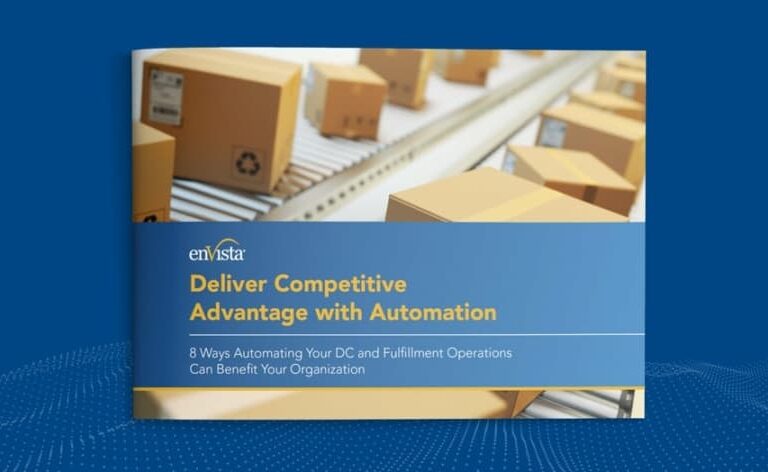Regardless of how much revenue a business generates, if operational costs are too high, profitability becomes an impossible goal. With increasing disruption, expanding customer expectations and heightened technology standards across every industry, the potential for operational costs to escalate out of control is growing.
However, recent advances in automation have revealed new opportunities for reducing operational complexity while enhancing accuracy, effectiveness and scalability, provided that they’re supported by the right automation strategies.
Benefits of Automation Strategies
Automation provides diverse benefits to business, including:
- Reduced manual errors
- Enhanced quality control
- Consistent outcomes
- Real-time data insights
- Faster processing and delivery times
- Improved staff and resource allocation
- Reduced labor costs
- Improved business performance
- Greater competitiveness
These benefits allow businesses to operate more efficiently, effectively scale operations and transition from a reactive to a proactive position.
As advances in artificial intelligence and machine learning grow, they offer the potential to optimize everything from internal collaboration to customer-facing marketing and sales efforts. This can greatly enhance productivity, reduce operational costs and transform essential decision-making processes.
Let’s take a look at the advantages of automation.
Improved Operational Efficiency and Productivity
Automation eliminates repetitive and time-consuming manual tasks, such as invoicing, order processing and inventory tracking. This allows employees to focus on higher-value activities. Increased efficiency leads to improved productivity and optimized resource allocation, resulting in enhanced business performance across the board.
Cost Reduction and Resource Optimization
Automation strategies help minimize labor expenses and allocate vital resources to the areas where they’ll provide the greatest benefits. It also reduces the risk of human errors, lowering costs associated with rework and material waste.
Through optimized resource utilization, companies can eliminate inefficiencies while improving accuracy in vital business tasks. It empowers businesses through reduced costs and improved return on investment.
Enhanced Accuracy and Quality Control
Automation ensures enhanced accuracy and precision in vital areas, such as data entry and compliance, resulting in improved quality control. Automated systems consistently follow predefined rules and guidelines, leading to reduced errors, higher-quality outputs, fewer defects and enhanced customer satisfaction. These technologies allow organizations to maintain higher standards, providing a competitive advantage.
Streamlined Decision-Making and Data Analysis
Automated systems generate accurate data in real time, providing businesses with valuable insights for informed decision-making. By leveraging automation tools and technologies, organizations can analyze data, identify patterns and plan strategies backed by reliable evidence. This empowers businesses to optimize their supply chain management, identify growth opportunities and stay ahead of the competition.
Key Components of Successful Automation Strategies
Before implementing automation, companies should consider:
- Objectives: Defined objectives allow businesses to understand which processes require streamlining.
- Tools: The right tools should offer solutions to identified problems.
- Oversight: A designated individual or team should oversee operational changes and automation rollout.
For example, if customer service agents spend hours repetitively sorting tickets and a business objective is to minimize sorting time, the company should select an appropriate automation tool and have its implementation managed by a designated lead.
Process Assessment and Identification of Automation Opportunities
Successful automation strategies begin with a comprehensive process assessment. By analyzing existing workflows, organizations can identify tasks where automation would improve efficiency and reduce manual effort.
Examples include high-cost processes, areas subject to delay-causing bottlenecks and repetitive tasks. Assessment ensures automation efforts support strategic objectives and deliver maximum impact on business processes.
Technology Selection and Integration Considerations
It’s crucial to select the right technologies for successful automation implementation. Consider factors such as scalability, compatibility with existing systems and ease of integration. Thorough evaluation and selection of technology vendors and partners ensure seamless integration and maximize the effectiveness of automation initiatives.
Change Management and Workforce Alignment
Effective change management and workforce alignment are vital for successful automation strategies. Communicate the benefits of automation to employees and provide training and support to facilitate a smooth transition.
By involving employees in the process and aligning their roles and responsibilities with automated systems, businesses foster a culture of collaboration while maximizing the potential of automation initiatives.
Performance Monitoring and Continuous Improvement
Automation strategies require ongoing performance monitoring and continuous improvement. Regularly evaluating automation initiatives helps identify areas for optimization, process refinement and improvement of technology use.
By monitoring key performance indicators, such as error rates, cost savings and processing time, organizations can continuously refine their automation strategies, address bottlenecks and drive digital transformation.
Best Practices for Implementing Automation Strategies
By adopting the following best practices, companies can navigate the automation journey effectively to achieve sustainable success:
Prioritizing Automation Projects Based on ROI and Strategic Goals
When prioritizing automation tasks, begin with high-impact, low-complexity processes. To ensure automation projects align with business goals, focus on those that address crucial objectives, such as cutting costs, increasing profit or improving customer satisfaction.
Concentrating on initiatives that offer significant value and contribute to established goals helps organizations maximize the benefits of automation with tangible results within a reasonable timeframe.
Developing a Phased Implementation Plan
A phased implementation plan is crucial for successfully adopting automation strategies. Before scaling to full deployment, an automation project must demonstrate proven success in the target area, such as improving efficiency or reducing costs.
Breaking down the implementation into manageable phases allows for testing and refinements before scaling up. This reduces risks, ensures smooth integration and provides opportunities for learning and adjustment.
Ensuring Scalability and Flexibility for Future Growth
As an organization grows and evolves, automation strategies need to accommodate increased volumes, new processes and changing business requirements. By considering scalability and flexibility from the outset, companies can future-proof automation strategies and effectively respond to market dynamics and growth opportunities.
Collaborating with Technology Vendors and Partners
Evaluating vendor expertise and their support services is vital. Working with experienced providers offers access to the latest technologies, industry insights and best practices.
Proven vendors can provide guidance and support throughout the implementation process, from initial solution design to ongoing maintenance and optimization. Treating vendors as an extension of the team, with shared goals and transparent communication, fosters long-term relationships with innovation at the heart.
Strategic Considerations for Automation in Supply Chain and Technology Consulting
To effectively implement automation strategies, take several strategic considerations into account:
Aligning Automation Strategies with Business Objectives
Automation must align with existing processes and technology. Review current tools and procedures to identify integration opportunities and create a basic integration map showing where automation will slide into existing systems. This ensures smoother transitions and fewer disruptions.
Addressing Potential Challenges and Risks
Although automation is an effective solution to complex supply chain issues, it may introduce additional challenges and risks, such as technological complexities, data security concerns or employee resistance.
By identifying, anticipating and addressing these challenges early on, businesses can develop mitigation plans, ensure smooth adoption and optimize automation’s benefits. Staff education is critical, and comparing current systems with proposed automated processes can help reduce risks.
Adapting to Workforce Changes and Upskilling Needs
Companies must prepare their workforce to operate with new intelligent systems. This involves identifying skill and knowledge gaps, investing in training and raising awareness of automation benefits.
Employees should fully understand the reasons behind their transitions to higher-value roles to minimize resistance to change. Cooperative staff members help maximize the potential of automation initiatives.
Leveraging Emerging Technologies for Competitive Advantage
Stay informed about emerging trends and technologies in automation to maintain a competitive edge. Exploring emerging technologies, such as artificial intelligence, machine learning and robotic process automation, can unlock new opportunities for process optimization, innovation and competitive differentiation.
Harness Automation Strategies with enVista
Automation strategies can simplify operations, enhance accuracy and drive cost-effectiveness. By implementing reliable automation strategies, organizations can improve operational efficiency and productivity, reduce costs, optimize resources, enhance quality control and streamline decision-making and data analysis.
To learn more about how to harness the power of automation in your business, explore enVista’s warehouse and distribution center automation and robotics integration solutions.
Contact us today to find out how our supply chain and technology consulting experts can help your organization harness the potential of automation strategies, optimize business performance and achieve sustainable growth.





